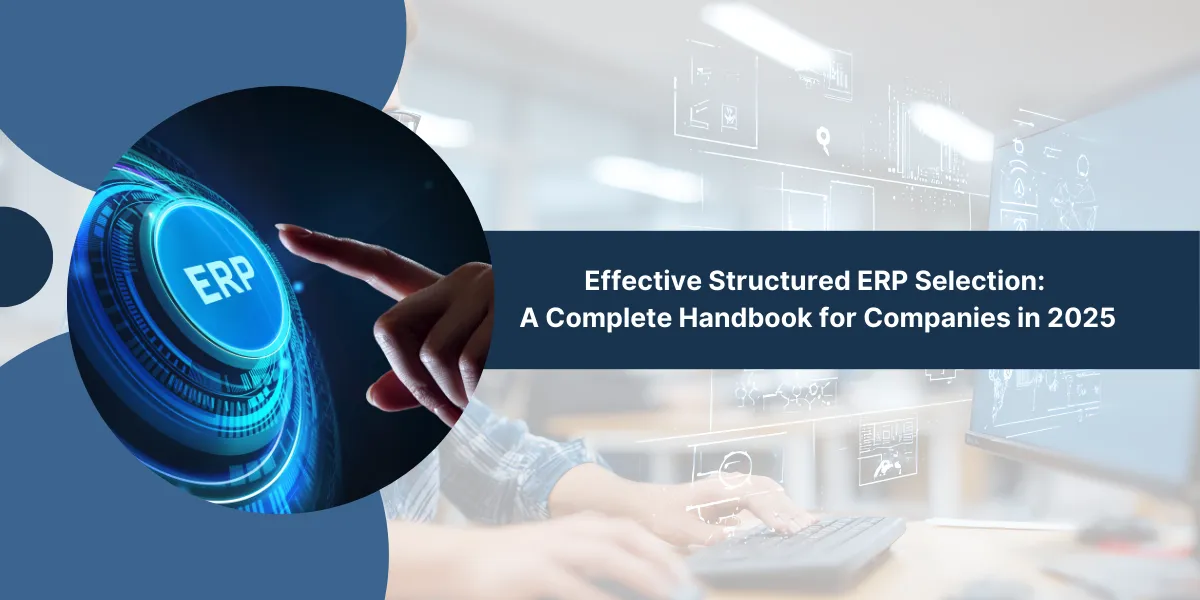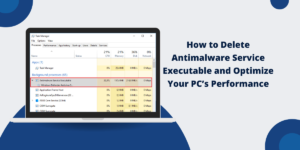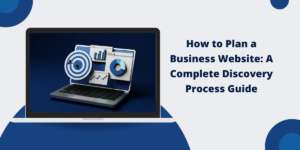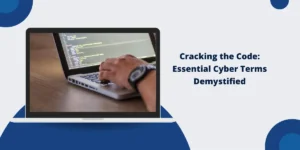Choosing the best ERP system is like laying the foundation for your business. When done properly, it sets you up for growth, more effective operations, and long-term success. Anything from operations to finance to customer trust can be negatively impacted if done poorly.
In the current fast-paced digital economy, where data accuracy, cyber threats, and compliance standards are more strict than ever, you cannot afford to wing it. An organized, well-considered ERP selection process is not merely desirable; it is essential to the mission. This article explores what structured ERP selection done right looks like, drawing on best practices from industry leaders and real-world case insights.
Why ERP Selection Matters More Than Ever
Consider an ERP system to be your company’s “central nervous system.” It creates a single source of truth by integrating departments like sales, supply chain, procurement, HR, and accounting. Teams work in silos, data is lost or duplicated, and decision-making becomes a wild guess in the absence of an efficient ERP.
However, in 2025, the stakes are higher. Your ERP system needs to do more than just streamline procedures in light of the growing popularity of cloud computing, more stringent data security laws, and the constant speed of cyberattacks. Additionally, it must facilitate compliance, protect sensitive data, and offer resilience against online threats.
Because of this, choosing an ERP is now a strategic business decision that requires careful planning rather than being viewed as a simple technology purchase.
The Risks of Getting ERP Selection Wrong
Many companies don’t realize how difficult choosing an ERP can be. Numerous studies show that almost half of ERP implementations go over budget, and a sizable portion fall short of the expected return on investment.
Typical pitfalls consist of:
- Project scope that is unclear: Vendors oversell features when requirements are unclear, which causes mismatches.
- Ineffective leadership alignment: Projects stall when executives don’t support them.
- Over-customization: Companies force systems to fit antiquated procedures, which makes upgrades difficult in the future.
- Ignoring cybersecurity: Sometimes it’s too late to address security, compliance, and privacy issues.
The result? Squandered funds, irate employees, and weaknesses that put the company at risk of cyberattacks.
Important Guidelines for Organized ERP Selection
Successful businesses treat ERP selection as a multi-phase, structured process to steer clear of these pitfalls. Let’s dissect the main ideas.
1. Start with Strategy, Not Software
Asking why we require a new ERP is a good place to start. Establish quantifiable objectives, such as cutting down on manual procedures, enabling real-time reporting, or strengthening security measures. The ERP will be in line with business priorities thanks to this strategic clarity.
2. Involve Stakeholders Early
ERP touches every corner of the organization. IT, finance, operations, human resources, and compliance must all help define requirements. This promotes user buy-in in addition to strengthening the requirements list.
3. Define Requirements with Precision
A structured requirements list is your north star. Deprioritize “nice-to-haves” and concentrate on essential features (such as audit trails, role-based access, and cloud security standards) to maintain consistent and defendable assessments.
4. Evaluate Vendors Objectively
Relying on vendor demos alone is risky. Instead, use standardized scripts to compare “apples to apples.” Evaluate vendors based on factors like security, scalability, cost of ownership, usability, and functionality.
5. Put Security and Compliance First
ERP systems need to have multi-factor authentication, encryption, and compliance frameworks (GDPR, PCI DSS, HIPAA, depending on the industry) because cyberattacks are becoming more frequent. Cyber resilience should be a core evaluation factor.
6. Think About the Total Cost of Ownership (TCO)
Consider implementation, training, integrations, upgrades, and continuing support in addition to license fees. Higher long-term costs may be concealed by a low initial cost.
7. Maintain Alignment in Leadership
ERP selection is an enterprise project, not merely an IT one. The project remains funded and prioritized through regular updates and open communication with leadership.
8. Leverage Independent Expertise
Few businesses choose ERP systems frequently enough to develop in-depth internal knowledge. Working with an independent ERP consultant can help you make structured decisions, benchmark vendor promises, and get objective insights.
The Four-Phase ERP Selection Framework
Drawing on proven methodologies, here’s a practical framework that businesses can follow:
Phase 1: Vision and Strategy
- Evaluate preparedness
- Set goals and success metrics
- Share your vision with the relevant parties.
Phase 2: Shortlisting and Requirements
- Engage multidisciplinary groups
- Sort must-haves from nice-to-haves.
- Choose three to five reliable suppliers.
Phase 3: Assessment and Demos
- Use structured demo scripts
- Make consistent vendor comparisons.
- Verify compliance and cybersecurity preparedness.
Phase 4: Preparation for Negotiation and Implementation
- Carefully negotiate service terms and contracts.
- Confirm implementation partner’s capability
- Make training and change management plans.
A Practical Example: Preventing Scope Creep
Without clearly defining requirements, a mid-sized European manufacturer started an ERP replacement project. From IoT integration to sophisticated analytics, vendors promoted alluring extras. Despite their value, these features caused an 18-month delay in rollout and doubled implementation costs.
Compare that to a comparable company that implemented a methodical approach. They chose an affordable ERP in six months by concentrating solely on the three essential requirements—supply chain visibility, finance automation, and compliance—with adoption rates exceeding 90%.
The difference? Discipline, organization, and clarity.
Expanding the Lens: Cybersecurity and ERP in 2025
ERP selection today isn’t just about operations—it’s about protection. Because ERP systems store sensitive financial information, customer records, and intellectual property, cybercriminals are increasingly targeting them. A breach here has the potential to instantly ruin a company’s finances and reputation.
When assessing ERP providers, businesses need to look more closely at:
- Access Controls: multi-factor authentication, zero-trust frameworks, and role-based access.
- Standards for Encryption: Both in-transit and at-rest data should be encrypted.
- Disaster Recovery and Backup: Vendors ought to make explicit promises regarding RPO (Recovery Point Objective) and RTO (Recovery Time Objective).
- Regulatory Compliance: ERP needs to comply with international privacy regulations, such as the CCPA in California and the GDPR in Europe.
Resilience is ensured and costly errors are avoided with a systematic selection process that incorporates security into every step.
Lessons from Failed ERP Projects
Stories of failed ERP projects are as instructive as the success stories. For example:
- A global retailer rushed into ERP selection without stakeholder input, resulting in a system that didn’t fit the needs of frontline staff. Adoption rates were abysmal, and shadow IT emerged as teams reverted to spreadsheets.
- A healthcare provider underestimated the cost of compliance features. The chosen ERP lacked HIPAA-aligned audit trails, leading to additional investments post-implementation.
These failures underline the need for structured selection that considers all aspects—functionality, compliance, and user adoption.
Practical Tips for Mid-Sized Businesses
Smaller organizations often assume ERP selection frameworks only apply to large enterprises. In reality, structure matters even more when budgets are limited. Some tips:
- Start Small, Plan Big: Select an ERP that can grow while still meeting your immediate needs.
- Make Integration a Priority: Verify that the ERP can interface with your current HR, CRM, and eCommerce systems.
- Avoid Over-Customization: Unless a customization clearly yields a return on investment, stick to standard features.
The Role of Change Management
ERP projects succeed not just because of the technology but because of the people. Change management should be part of selection from day one. This includes:
- Clear Communication: Explain why change is happening.
- Participation: Involve staff members in decision-making and demonstrations.
- Support Structures: Provide help desks, FAQs, and training sessions.
Adoption rates are higher and rollouts go more smoothly for organizations that invest in change management.
Final Thoughts
Choosing an ERP system that will run your company safely and effectively for the ensuing ten years is more important than simply locating software. ERP selection can be turned from a risky gamble into a planned, successful endeavor by concentrating on strategy, involving stakeholders, giving cybersecurity top priority, and utilizing professional advice.
ERP protects your digital future in addition to streamlining operations. That’s what structured ERP selection done right really means.

Priya Mervana
 Verified Web Security Experts
Verified Web Security Experts
Priya Mervana is working at SSLInsights.com as a web security expert with over 10 years of experience writing about encryption, SSL certificates, and online privacy. She aims to make complex security topics easily understandable for everyday internet users.



